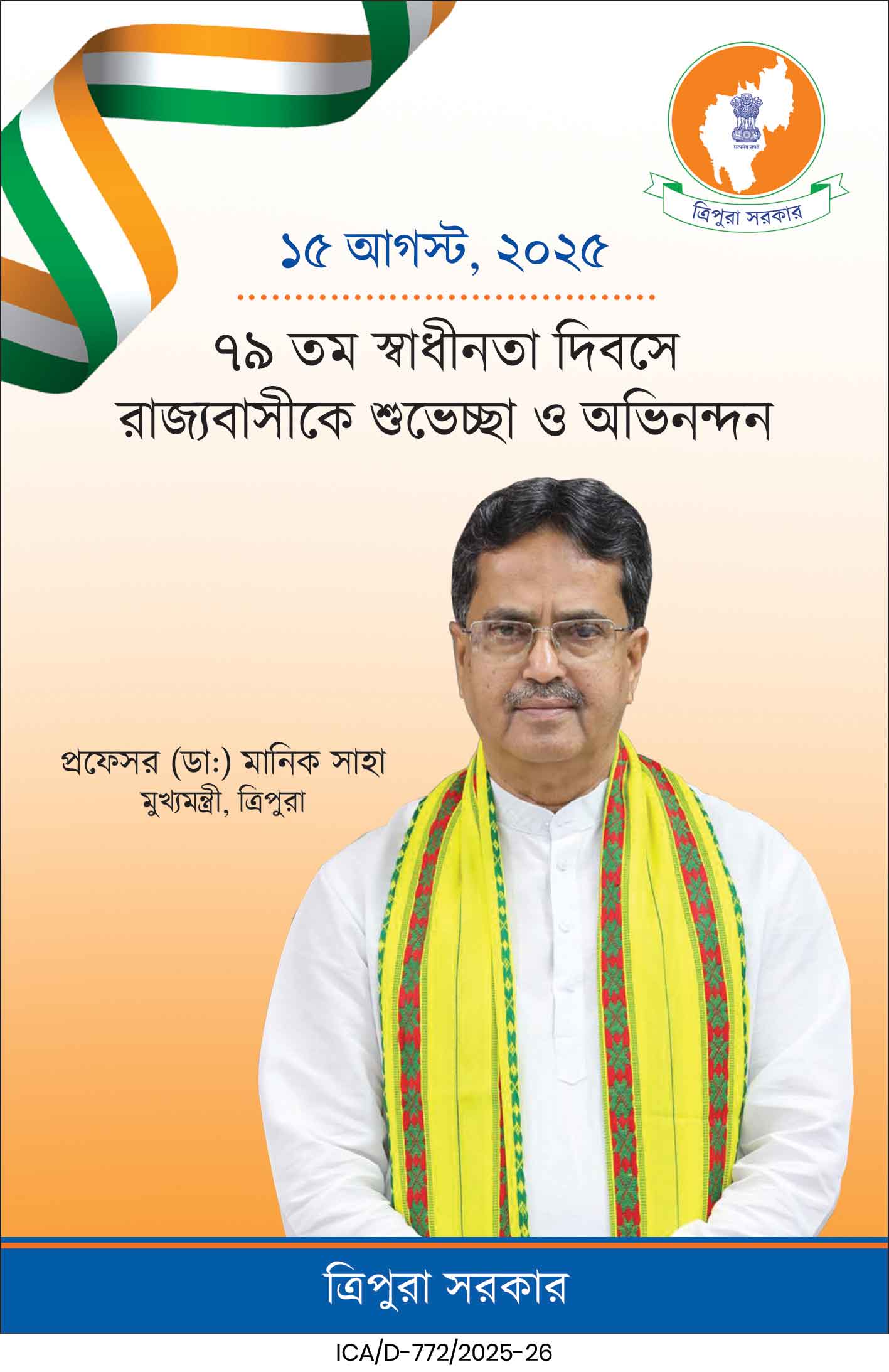The Northeastern region of India is known for its ethnic, linguistic and cultural richness and diversity. When we talk of mainstreaming the northeast, the factor that is of utmost importance and of grave concern is that we must first and foremost ensure that the richness of the multiple ethnicities that inhabit this region remains intact. In trying to market our cultural and natural assets, we must ensure that we do not deplete our natural resources and in that process become people without identity. While we cannot move against time and tide, we can use whatever we have judiciously for a sustainable development. For sustainable development there is the crying need for awareness and education. Education that not only enlightens but also empowers is the requirement.Especially, the indigenous people, who inhabit this region require this empowerment. Without economic and political empowerment, mainstreaming will be mixed with dangers that will threaten their vey existence .This is the caveat that I want to put , prior to saying anything on the subject of mainstreaming. Therefore the first and foremost challenge we need to face is that of EMPOWERMENT. The constitutional provisions that are there for decades for the purpose of empowering the indigenous people of the northeast need to be re-looked at, in the context of changing times,so that these provisions ensure that they serve their purpose of empowering the people and don’t become impediments in their path.
We all know that the northeast comprises of the states of Arunachal Pradesh, Assam, Manipur, Meghalaya, Mizoram, Nagaland, Sikkim and Tripura, with about 8 per cent of the country’s geographical area and about 4 per cent of its population. Their combined contribution to the national economy is around 2 per cent. The NER has 40% of the country’s hydro-electric power potential, 53% of tea product and 26% of forest product’ according to The Vision 2020 vol. III: 270). The question is how to mainstream the NER , so that our resources bring optimum benefits to our people. The policy of ‘optimum’ utilization of the unutilized resources of the region and the rationalisation of hurdles that impede development are perhaps , the cornerstones in our journey towards development.
Northeast as a region started figuring prominently in planning literature from the early 1970s, particularly after the reorganization of states in the region. The establishment of the North Eastern Council (NEC) in 1972, was an acceptance of the fact that this region needed special institutions and incentives for development. In the Sixth Five Year Plan, under the sub-plan approach, greater emphasis was placed on Special Tribal Plan, Hill Area schemes and the programmes handled by the North Eastern Council (Sixth Five Year Plan 273). Contrary to the Third Plan, where it was argued that the central government cannot influence much the private sector initiatives in backward areas, under the Sixth Plan, central policies were also designed ‘to provide incentives to private entrepreneurs through schemes of concessional finance, seed/ margin money.
It seems that due to special constitutional arrangements, historical background as well as geographical location,the present central government has been trying to integrate the Northeast region with the national economy through certain policy framework. It has accepted the right of the tribals to retain their way of life and identity and has sought to integrate them through democratic means into the federal frame of the Constitution of India. The policy framework for the region, so far is guided by a combination of political economy and culture. The main focus of the political economy approach is on the relations between the state and the economy.
Under the influence of this policy, various schemes for the development of infrastructure and economy of the Northeast region have been formulated. The schemes include the formation of the Northeastern Council, Hill Area Development Projects and sub-plans, Tribal Area sub-plan, and Tribal Development Agency Projects to name only a few. In addition, Northeast states have been declared as Special Category States; they get central assistance on the basis of 90 per cent grant and 10 per cent loan. Some public sector units have also been set up in the region. The policies of industrial licensing, concessional finance and investment subsidy, growth centres, as well as freight equalization of some major industrial inputs have also been used towards economic development. Under the announcement in October 1996, all developmental ministries and departments of the central government have been directed to earmark at least 10 per cent of their annual budget for the programmes in the Northeast. In case any central government ministry failed to achieve this target, the unutilized 10 per cent portion is pooled in the non-lapsable central pool of resources, which will be re utilized to finance developmental projects in the Northeast. Creation of a separate department and then a Ministry for the Development of North Eastern Region (MDoNER) by the late visionary Prime Minister Sri Atal Behari Vajpayee, was another new initiative by the government. In 2008, the union government came out with a Vision 2020 for the region. The vision document argues that to reach per capita average by 2020, the region has to grow close to 13 per cent per year (GoI 2008b). In addition, the critical non-economic parameters required to reach required growth included good governance, improved law and order and diplomatic initiatives with the neighbouring countries.
The development strategy followed by the earlier central government had earlier created an unbalanced economy in the Northeast. There are differences among the states of the region with respect to their resource endowments, levels of industrialization as well as infrastructural facilities. On the whole, all these economies are underdeveloped agrarian societies with very weak industrial sectors and inflated service sectors. The share of agriculture although declined, is still much higher than the national average. The industrial sector has mainly developed around tea, oil, timber (TOT) in Assam, and mining, saw mills and plywood factories in other parts of the region. State sponsored industrialization –whether sugar mills, jute mills, paper mills or food processing –has not been successful. Small-scale industries have also not been viable, and there is large scale industrial sickness in this region. Despite changes, the economy of the region remains primarily agricultural. The full potential of this sector has not been exploited.Since neither agriculture nor industry had taken off, the pressure for employment on the service sector (government service)persists.
In the post-liberalization phase during the 1990s, while the national economy was growing fast after initial contraction, overall Northeastern economy had slowed down. As a result, the gap between national growth rates and regional growth rates further widened. Assam, the largest economy of the region was in a very critical state, both in agriculture and industry. In the decade of 1980s, the average rate of growth of Assam was more than 4 per cent. In the 1990s, growth in Assam was much lower. Except Arunachal, the hill economies did not show much difference in growth rates during the decade. Overall, as a result of these trends the gap between the northeast and the national economy widened in the 1990s.
I have tried to enumerate some of the challenges that our region faces and have also tried to briefly put forward some ways in which these challenges can be met.
CULTURE AND TOURISM
The vision document 2020 says, “An important part of capacity building is increasing awareness in the rest of the country about people in the NER, and within the region itself through increased social interaction. This would require promotion of sports and cultural exchanges within the Northeastern region as also between the region and the rest of the country. The rich cultural heritage of the region can be capitalised on by engaging the youth in creative activities while promoting a two-way understanding with the rest of the country. Organising annual music and dance carnivals in different parts of the NER with competitions at the district, state and regional levels would increase youth involvement in creative activities. These events could become important tourist attractions, with national and international participation, which, with good publicity should attract a large number of tourists, who can be ferried through chartered flights”.This is about one of the ways, of Mainstreaming North East through interaction and utilisation of the tourism potential of the region.This is also about cultural capital and about feeding it into a circulating global economy. There is however a concern on how these specific cultural resources can be sustained , within a cash-tourist economy. While promoting tourism and other such activities , we must ensure that our cultural resources and the fragile eco- system of our region are not ‘commodified and finally destroyed.This is the important challenge that the tourism industry faces in the north east.While utilising the Cultural capital of the region to promote tourism any action plan must pay equal importance to its sustainability.
PRIVATE INVESTMENT
For some time, there has been some rethinking on the development pattern followed in the Northeast. It has been realized for quite some time that this kind of development pattern will not be able to face the forces of liberalization and globalization, unless some serious radical policies are implemented. For that civil society in the region has been engaged in serious debate about different alternatives and their implications. The central government is taking many initiatives. After seeing difficult economic conditions, state governments from the region are also initiating many measures to attract private investment. As a result of combination of factors, economic performance improved significantly in the north east. Most of the states at present are rightly playing the role of a facilitator rather than a promoter of development .The actual action regarding changes in attitude towards investors will have to begin at the state level. economic growth in the region has improved, it still has to tackle many of the fundamental issues which continue to affect its performance. Information and statistical data shows that there has been definite improvement in economic performance in the region lately.
Literacy
Third, the importance of high literacy levels in the Northeast should not be over emphasized. Although the region has done well in education due to several socio-historical factors, but there lies underneath some serious problems –that of imbalance. Results of 2011 census indicate that despite some pockets of high literacy the combined literacy rate in the region is 73.7 per cent, which is slightly below the national average. Even in the neighbouring West Bengal, the literary rate is 77 per cent. Low literacy rates in Arunachal Pradesh and Assam are responsible for this. There is, however, significant improvement between 2001 and 2011. According to 2001 census, thirty-five out of seventy-two districts of the region recorded literacy levels below national average. Even high literacy rates in other districts were accompanied by low educational levels due to high dropout and low standards.
Teachers
There are enough teachers in the region but many of them are not trained. According to sixth National Council of Educational Research and Training (NCERT) survey, only 45 per cent of total school teachers in the region are trained. The corresponding figure for the national level was about 87 per cent. The situation was particularly bad in Assam and Nagaland where only about 30 per cent teachers at the secondary and higher secondary levels were trained. Latest figures from the Ministry of Human Resource Development also indicate that except Manipur, all the states in the region has high gross dropout rates at all stages. Even in a state like Mizoram, which has almost 90 per cent literacy, about 76 per cent students could not complete high school (Annual Report 2004–05: 262). So the education systems require proper revamping because without this mainstreaming the development of the northeast will remain somewhat a distant dream.
Labour
Another factor is that major parts of the region face labour scarcity. This is perhaps one of the main reasons for the failure of various labour intensive government schemes like animal husbandry, Jawahar Rozgar Yozana and so forth. Despite all the talk of outside invasion, labour (both skilled and unskilled) is a big problem with the possible exception of Brahmaputra valley and Tripura. Already outside labour (mainly from Bangladesh, Myanmar, Nepal and other parts of India) is a crucial factor in both agricultural as well as non-agricultural activities. With any increase in economic activities, the problem of labour shortage is expected to be aggravated. Unless the the problem of labour availability is seen through a progressive lens, economic development is going to suffer. Or worse, it would be an open invitation to illegal Bangladeshi immigrants.
GEOGRAPHICAL SITUATION
Another standard argument is its disadvantageous geographical situation and connectivity. I remember a few months back I had go to Imphal for a meeting from Agartala but had to fly to Kolkata and then to Imphal. If one looks at the route mapI took it seems absurd. It highlights the the problems of regional connectivity.
This lack of connectivity has been argued in writings as one of the main stumbling block for its economic development. The region shares less than 1 per cent of its borders with the rest of the country, and the rest with Bhutan, Bangladesh, Myanmar and China. For the most part this international border has been artificially created. The result has been the elimination of the region’s trade, commerce and other linkages which existed in the pre-partition days. This locational disadvantage could be converted into a boon as these states are very close to the dynamic Southeast and East Asian economies. It is imperative to develop coherent policy thinking in this area. The reason being that there is not only a failure of the economic policy framework in the region but also a weakness of country’s foreign policy which had ignored Southeast Asia for a long time. So far the major border trade activity of the region with Bangladesh and Myanmar has been ‘unauthorised trade’.
China is an important player in the border trade even though its trading activities are mainly through Myanmar. The major policy issue, therefore, would be to synchronize these realities into Indian trade policies. But first of all the region should start producing globally competitive products. Otherwise the region would be a transit point of goods which may create further discontent.
CONCLUSION
In conclusion, the failure of earlier economic strategy for the region is not solely because of only economic neglect but because also of wrong assumptions and inappropriate socio-economic policy framework, which had created an unbalanced economy and hindered the basic institutions of market economy. There is a shortage of land as most it consists of reserved forests , where major economic activities cannot be carried out. There are labour shortages due to regulations in Arunachal Pradesh, Nagaland and Mizoram. And, of course, there is a need to encourage investment climate . We need to demystify the region, create basic institutions of market economy and start working towards linking the region with dynamic Asian economies. In a liberalized economy, any new policy has to be based on some kind of market oriented approach. This framework should concentrate more on economic factors. The economic factors include labour cost, comparative advantages, technology, efficiency and returns on investment. In a market economy environment , although market forces will play a greater role, the state institutions will have to be geared up for the new task. The stimulus to expansion at the national level is likely to run up against supply bottlenecks due to insufficient infrastructure, entrepreneurship, business supporting institutions.
This is where the governments would have to play a role, specifically the state governments. Therefore, there is an urgent need to re- define the role of the central as well as the state governments in developing the region with the right degree and intensity in the context of a decentralized liberal economy. The central government needs to play the role of a facilitator rather than a promoter of development.
( The views expressed are personal and that of the author not connected to any political party/ organisation he is associated with.)





